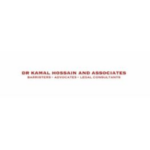-
Is your jurisdiction a common law or civil law jurisdiction?
New Zealand is a common law jurisdiction.
-
What are the key statutory/legislative obligations relevant to construction and engineering projects?
Key statutes governing construction are the Building Act 2004, the Construction Contracts Act 2002 (CCA), and the Health and Safety at Work Act 2015 (HSWA).
The Building Act provides for a Building Code, which prescribes functional requirements for buildings and sets out the performance criteria with which buildings must comply. The Act sets out the obligations and powers of building consent authorities and territorial authorities in relation to applications for building consents. It also regulates building practitioners, and sets out consumers’ rights and remedies in relation to residential building work.
The CCA addresses payment claims and schedules, sets out a retentions regime, and establishes a method for adjudication of construction disputes.
The HSWA sets out the duties of PCBUs (persons conducting a business or undertaking) with regard to the health and safety of their workers (including both employees and non-employee workers, such as contractors) at work. It identifies offences relating to PCBUs’ failure to fulfil their duties, sets out requirements for worker engagement practices concerning health and safety, and establishes an enforcement regime.
-
Are there any specific requirements that parties should be aware of in relation to: (a) Health and safety; (b) Environmental; (c) Planning; (d) Employment; and (e) Anti-corruption and bribery.
- health and safety;
- The HSWA covers anyone working, or doing business in the construction industry. It is not lawful to contract out of the HSWA, or to indemnify against fines or infringement fees imposed as a result of a breach of the HSWA.
- The purpose of HSWA is to encourage people in business to take responsibility for management of health and safety at work. The primary duty falls on a PCBU (person conducting a business or undertaking) to ensure, so far as reasonably practicable, that the health and safety of its workers and any other person are not put at risk by the work. A PCBU includes: (a) a company; (b) partnership; (c) other entity; or (d) an individual, regardless of whether the PCBU acts for profit or not.
- The HSWA also imposes duties on “Officers” of a PCBU (including directors, partners or those who occupy a position which allows them to exercise significant influence over the management of the PCBU). An Officer is obliged to use due diligence to ensure the PCBU complies with its duties under the HSWA.
- These duties include providing and maintaining, so far as is reasonably practicable, a safe work environment without risks to health and safety, safe systems of work, safe use of substances, and the provision of training, instruction and supervision that is necessary to protect all persons from risks to their health and safety arising from their work. PCBUs must also consult, cooperate and coordinate with other PCBUs that have a duty in respect of the same work or workplace. PCBUs have a general obligation to engage with workers on health and safety matters, and to allow opportunities for worker participation in improving work health and safety. Further, workers have duties under the HSWA, including an obligation to follow the PCBU’s reasonable instructions, and to take reasonable care that their actions do not harm themselves or anyone else.
- Penalties for breaches of the HSWA include fines, reparations and imprisonment. These penalties can be awarded against the PCBU and/or its Officers, depending on what duty has been breached.
- environmental issues;
- The parties must comply with the requirements of the Resource Management Act 1991 (RMA). Part 6 of this Act regulates the process of applying for resource consent, which may be needed before construction can commence. Parties typically lodge their applications for resource consent with the relevant regional council.
- Part 3 of the RMA also forbids people to use certain parts of the environment in a manner which contravenes a national environmental standard or regional or district rules, unless that use is allowed by a resource consent or otherwise permitted. Prohibitions under Part 3 include those in relation to land, the coastal marine area, rivers and lake beds, other water, discharge of contaminants, noise, and other adverse effects.
- planning;
- The RMA establishes a regime for regional plans to assist regional councils in carrying out their functions to achieve the purposes of the Act. These plans may restrict the type of construction work that can be done in certain areas. For example, high-density housing may only be constructed in some areas in a city. Part of the process of applying for resource consent includes ensuring that the proposed works comply with the relevant regional plan.
- employment; and
- Employment law in New Zealand is governed by a mix of statutory, contractual, and common law obligations.
- The Employment Relations Act 2000 governs many aspects of the employment relationship, including provision for a duty of good faith, obligations around employment agreements, transfer of undertakings, hours of work, union representation, collective bargaining, termination, and personal grievances. Other minimum code legislation includes the Holidays Act 2003 (governing minimum entitlements to annual holidays, public holidays, sick and bereavement leave, and family violence leave), Minimum Wage Act 1983, Wages Protection Act 1983, Human Rights Act 1993, and Privacy Act 2020.
- Employees can be employed either as individuals (on an individual employment agreement between the employer and employee) or, if they are members of a union, may be covered by a collective agreement between the employer and the union. Employment can be permanent or on a fixed term basis, but there are restrictions on when an employee can be employed on a fixed term employment agreement. Similarly, casual employment agreements (where an employee is employed on an ‘as and when required’ basis) are possible, but restricted. Some employees in the construction industry are engaged through labour hire companies in what is often termed a triangular employment relationship.
- Independent contracting relationships are also quite common within the construction sector. The line between an independent contractor and an employee can sometimes be a fine one, but there are significant consequences of the different status, including minimum entitlements for employees (e.g. minimum wage, holidays, and personal grievances) and tax consequences. A court considering the status of a worker will look at the “real nature of the relationship” to establish whether the person is, at law, a contractor or an employee. The contract between the parties will be relevant but not determinative.
- Termination of employment must be for good reason, and follow a fair process. Any termination will be subject to the statutory test for justification which considers whether the action the employer took (e.g. dismissal) and how the employer acted (i.e. the process followed) were what a fair and reasonable employer could have done in all the circumstances. Any termination for redundancy, poor performance, incapacity, or misconduct must be preceded by a process in which the circumstances are investigated, relevant information put to the employee, and the employee’s feedback sought and considered, before a decision is made. The Government has proposed changes to the Employment Relations Act 2000 preventing an employee, earning above a $180,000 base salary, from being able to bring a personal grievance against their employer, with a draft bill anticipated to be introduced later this year.
- anti-corruption and bribery.
- There is no specific regulation for anti-corruption and bribery targeted at the construction sector. However, the provisions of the Serious Fraud Office Act 1990 and Secret Commissions Act 1910 apply.
- health and safety;
-
What permits, licences and/or other documents do parties need before starting work, during work and after completion? Are there any penalties for non-compliance?
There is a consent process which the principal needs to go through before any work can begin on the project (with very limited exceptions such as where lower value work does not require a building consent and certain repair and maintenance work). This may involve applying to a consent authority (a regional council or territorial authority (district or city council), or local authority that is both) for resource consent, which is a formal approval for things like the use or subdivision of land, the taking of water, the discharge of contaminants in water, soil or air, or the use of coastal space. Next, the principal must apply to the building consent authority (BCA) (usually a local or district council) for building consent, which allows them to carry out building work. This consent is issued only when the BCA is satisfied that the proposed work will comply with the Building Code. During the building process, building inspections must be carried out to ensure ongoing compliance with the building consent. Finally, the principal must obtain a code compliance certificate to show the building complies with the requirements of the Building Act 2004. The Act sets out various offences and penalties for breaches of the Act and Building Code.
-
Is tort law or a law of extra-contractual obligations recognised in your jurisdiction?
Tort law is recognised in New Zealand. As it applies to construction work, it covers economic loss, but not physical personal injury. Physical personal injury is covered by the no-fault Accident Compensation Corporation (ACC) scheme.
-
Who are the typical parties involved in a construction and engineering project?
The typical parties involved in a construction and engineering project are:
- The principal;
- The head contractor;
- Various subcontractors;
- Consultants, such as the project engineer and the architect.
-
What are the most popular methods of procurement?
- Build only: in which the principal retains the consultants directly, and employs the contractor only to carry out the building work. All the subcontractors are employed by the main contractor. The most common contract used for this is NZS 3910.
- Design and build: in which the main contractor takes on the responsibility for both the design and construction. Again, all the subcontractors (including any consultants the main contractor requires for fulfilling its design responsibility) are employed by the main contractor, and NZS 3916 is commonly used for this scenario.
- PPP/public private partnership, in which the Government contracts with private enterprise (usually a consortium of several companies) to conduct the building work. Note, because of the Government’s involvement, this option is subject to rigorous procurement procedures to ensure there is no conflict of interest or appearance of financial irregularity.
- Alliancing, in which the parties may work together with the principal for collaborative project delivery. A Project Alliance Agreement (PAA) is signed by all participant parties to commence the alliance. The PAA generally prohibits claims between the parties (save perhaps in very limited cases like fraud or gross negligence). All participants share in the success (gain) or failure (pain) of the project, and there is an open and collaborative approach to risk, performance and project decisions.
-
What are the most popular standard forms of contract? Do parties commonly amend these standard forms?
The most popular standard forms of contracts are:
- NZS3910 – construction only (the 2013 edition is widely used on existing projects, and a 2023 edition has been released);
- NZS3916 – design / build (the 2013 edition is presently used, with a 2025 edition expected this year); and
- The Standard Form Public Private Partnership (PPP) Project Agreement.
All are commonly amended.
-
Are there any restrictions or legislative regimes affecting procurement?
There are no restrictions or legislative regimes affecting procurement in the private sector. However, governmental procurement is subject to strict rules set out in the Government Procurement Rules (generally) and, for construction in particular, the Construction Procurement Guidelines, which establish specific standards of good practice for government procurement processes.
-
Do parties typically engage consultants? What forms are used?
Yes, consultants are regularly engaged by parties. The contracts commonly used are:
- The Short Form Agreement (SFA) published by Engineering New Zealand and the Association of Consulting Engineers New Zealand (ACENZ);
- The Conditions of Contract for Consultancy Services (CCCS) developed by various consultant and client groups, including Engineering New Zealand;
- The full or short form Agreement for Architects Services published by Te Kāhui Whaihanga / New Zealand Institute of Architects (NZIA).
-
Is subcontracting permitted?
Subcontracting is both permitted and common. However, most construction contracts do not permit a contractor to subcontract out the whole project. Note that the contractor must normally identify at least the key subcontractors and obtain the principal’s approval.
Head contract terms are frequently carried down into subcontracts. Subcontractors have historically had limited commercial ability to negotiate or vary these terms. However, recent amendments to the Fair Trading Act 1986 may affect this practice. The Act now incorporates a prohibition on unconscionable conduct. Unconscionable conduct is defined as business activity that is a substantial departure from New Zealand’s generally accepted or expected standards of business conduct. A party that has inserted an unconscionable contract clause may face civil claims to void that clause and risk financial penalties, and a criminal conviction.
-
How are projects typically financed?
Projects in the private sector are typically financed either by the principal itself, or with the assistance of an external financier. Funders may have their own specific requirements for inclusion in the construction contract, or a separate tripartite agreement with the principal and main contractor, to ensure their own protection. Protections included in the construction contract may include permitting the funder and its quantity surveyor to access the site; requiring the contractor to provide requested information to the funder and/or its quantity surveyor; and requiring confirmation the contractor has paid its own subcontractors and suppliers. Protections included in a separate tripartite agreement tend to be more expansive than those included in the construction contract may include, for example, the protections outlined above, as well as: advance notice to the funder before exercising suspension or termination rights under the construction contract; rights for the funder to remedy breaches by the principal under the construction contract to prevent legal action; step in rights (including novation); indemnities in favour of the funder; specific warranties or undertakings in favour of the funder; restrictions regarding ordering or granting variations above a certain value; and the right to call or attend meetings.
In the public sector, the Government may have earmarked funds for certain projects. Otherwise, it is not unusual for larger projects to be driven by public-private partnerships. See further information on procurement in question 7.
-
What kind of security is available for employers, e.g. performance bonds, advance payment bonds, parent company guarantees? How long are these typically held for?
Principals often require bonds, which are usually around 5-10% of the total contract price, and given by a bank, surety company, or insurer. A performance bond is the most usual type of bond, and is held until practical completion (although advance payment bonds are also used). Less common, but not out of the ordinary, is the requirement for a guarantee from a parent company or suitable third party. See question 16 for a discussion of retentions.
-
Is there any specific legislation relating to payment in the industry?
The CCA governs payments under construction contracts. It prohibits conditional payment provisions, but otherwise recognises that parties are free to agree express terms for payments in their contracts. Where the contract is silent, the CCA will fill the gap (e.g. the default in the CCA is for payment within 20 working days after service of a payment claim).
-
Are pay-when-paid clauses (i.e clauses permitting payment to be made by a contractor only when it has been paid by the employer) permitted? Are they commonly used?
Section 13 of the CCA prohibits these clauses (making them of no legal effect).
-
Do your contracts contain retention provisions and, if so, how do they operate?
Yes. Most of the standard form contracts contain general conditions governing retentions coupled with special conditions in which the parties can populate the relevant details, such as the percentage of payments to be held back as retentions, how much money is to be released at practical completion and final completion, and so on.
Retentions are automatically held on trust, and must be held in a registered bank in New Zealand. Such account must either be an account used solely for the purpose of holding retentions (which may be for multiple parties across multiple projects), with the bank being informed that such account is for retentions under the CCA, or a bank account ordinarily used to hold trust money where the account holder is of a type listed in the CCA (such as a trustee company or law firm). The party which has held back retentions must proactively report on the money held.
Retentions may be used only to remedy defects in the sub/contractor’s performance which become evident after the sub/contractor has completed their work. It is usual to keep as retentions 10% of the first $200K payable, with decreasing percentages for payment thresholds following. Commonly, half of the retention money is to be paid out on practical completion, while the remainder is held back until the end of the defects liability period (generally lasting anywhere from 3 to 12 months after practical completion).
-
Do contracts commonly contain liquidated delay damages provisions and are these upheld by the courts?
Contracts commonly contain liquidated delay damages provisions (LD provisions), and these are regularly upheld by the courts. An LD provision fixes the sum payable as damages for the failure of a provision of the construction contract, normally the contractor’s obligation to achieve practical completion by a specified date, and acts as a liability cap. Liquidated damages (LDs) are typically used as a binding and exhaustive remedy for delay, and general damages cannot be claimed in addition or as an alternative.
LDs are generally enforceable unless they constitute a penalty. Generally, if a LD provision is held to be an unenforceable penalty, the principal is left to claim general damages and prove its actual loss. Courts in New Zealand have moved away from the long-established “genuine pre-estimate of loss” test for whether LDs are valid towards a wider “legitimate interest” test. Under this test, a clause is considered to be a penalty (and will not be enforced) where the detriment to the contract breaker is out of all proportion to any legitimate interest of the innocent party in the enforcement of the primary obligation. Under this newer test it is less likely LDs will be found to be a penalty.
-
Are the parties able to exclude or limit liability?
Generally parties may exclude or limit liability. Consultancy agreements typically have a liability cap and exclude liability for consequential, indirect and special loss, and frequently loss of profits. The standard forms of construction contract (i.e. for the building work itself) most commonly used in New Zealand generally do not have limits and exclusions on liability, but a liability cap is frequently sought in negotiations where the contractor is professionally advised. That said, the latest edition of NZS 3910 published in 2023 includes a new opt-in liability cap, which is expected to be reflected in forthcoming 2025 editions of two other NZS suite contracts (3916 and 3917).
There are exceptions to the power to limit liability, typically directed at consumer protection. The Building Act 2004 implies warranties into residential building contracts and provides remedies for their breach. Provisions contracting out of these will be ineffective. Similarly, the Consumer Guarantees Act 1993 (CGA) and Fair Trading Act 1986 (FTA) provide certain minimum protections for consumers which cannot be circumvented. Where both parties are acting in trade they can contract out of these provisions (subject to considerations of the exclusion or limit being an ‘unfair’ term in the case of ‘small trade contracts’ under the FTA); however, the provisions will apply to many residential construction contracts.
-
Are there any restrictions on termination? Can parties terminate for convenience? Force majeure?
The parties may set out grounds for termination in their contract. These grounds typically include breaches which have not been remedied within a certain timeframe, insolvency events, and abandonment of the contract. Termination for convenience is not a term in the most common standard forms of construction contract used in New Zealand, but the parties may agree to include that right. Aside from any contractual rights of termination, a party may cancel a contract pursuant to the Contract and Commercial Law Act 2017 where the other party has repudiated the contract (i.e. has made it clear they do not intend to perform), or in certain specific cases of misrepresentation and/or actual or anticipatory breach. That said, if the contract expressly provides for a remedy for repudiation, misrepresentation or breach, the Act has effect subject to the contractual terms.
The most common standard form construction contracts, the NZS suite, do not include express force majeure clauses; however, they do provide for termination upon frustration. Certain force majeure events may also excuse contractor responsibility for maintenance of the site or entitle a contractor to an extension of time. It is not uncommon for contracts to contain express negotiated force majeure clauses.
Absent a frustration clause effective in a force majeure event, the parties may rely on common law principles to establish that their contract has been frustrated. Under Part 2 subpart 4 of the Contract and Commercial Law Act 2017 a Court may make orders for money to be paid or property to be transferred where it is just to do so. There are limits to the recoverable sum, so it is preferable to include a clear force majeure clause in the contract.
-
What rights are commonly granted to third parties (e.g. funders, purchasers, renters) and, if so, how is this achieved?
Rights may be granted to third parties under the contractual privity sections of the Contract and Commercial Act 2017 – where the construction contract (to which they are not a party) purports to confer a benefit on the third party, the third party may enforce the construction contract as if they were a party.
Under the Building Act 2004, a purchaser of a residential property will have the benefit of the statutory warranties implied in the original residential construction contract (see question 18) and, subject to applicable limitation periods, may bring proceedings for breach of warranty, notwithstanding they were not a party to that original contract.
More generally, New Zealand law recognises an extra-contractual duty of care to subsequent purchasers of both residential and non-residential property on the part of developers, contractors, subcontractors, suppliers, and consultants to ensure the design, materials and works comply with the New Zealand Building Code including weathertightness requirements.
Separately, funders may have their own specific requirements for inclusion in the construction contract, e.g.: permitting the funder and its quantity surveyor site access; requiring the contractor to provide requested information; and requiring confirmation the contractor has paid its own subcontractors and suppliers. Funders may also require a separate tripartite agreement, which may include protections that are more expansive, for example, the protections outlined above, as well as: advance notice to the funder before exercising suspension or termination rights under the construction contract; rights for the funder to remedy breaches by the principal under the construction contract to prevent legal action; step in rights (including novation); indemnities in favour of the funder; specific warranties or undertakings in favour of the funder; restrictions regarding ordering or granting variations above a certain value; and the right to call or attend meetings.
-
Do contracts typically contain strict provisions governing notification of claims for additional time and money which act as conditions precedent to bringing claims? Does your jurisdiction recognise such notices as conditions precedent?
The NZS suite of construction contracts most commonly used in New Zealand contain timely notification provisions, but these do not act as conditions precedent. For example, under the 2023 edition of NZS 3910, if the Independent Certifier is required to make a decision on an extension of time claim, any failure by the contractor to give timely notice (and the impact of that) is generally considered as part of that assessment rather than acting as a bar on the claim itself. Many notification provisions in the NZS suite require notice to be given within a reasonable time or as soon as practicable rather than within a specific time frame. A commonly used form of subcontract (SA-2017) in parallel is stricter, requiring extension of time claims to have been brought within 5 working days, otherwise the subcontractor has no entitlement.
It is not unusual for principals to modify terms – or use bespoke contracts – to include strict provisions governing notification of claims for additional time and money. If agreed, these will be recognised as conditions precedent.
-
What insurances are the parties required to hold? And how long for?
The NZS standard form construction contracts make provision for insurance for:
- Construction (also called ‘contract works’). This must cover loss/damage up to the time of practical completion, or until the principal takes occupancy, or while the contractor is doing things to comply with its obligations after practical completion or the principal’s occupancy;
- The NZS contracts do not specify a time period for this, but it must cover the period up to the issue of the defects liability certificate for the contract works;
- Public liability (including motor vehicle). This must be held until the final completion certificate is issued; and
- Professional indemnity. Because these are typically claims-made policies, for vertical projects insurance should be held for at least 10 years to cover the longstop limitation period under the Building Act (albeit NZS 3910 requires such insurance to be maintained for six years following practical completion, or, in the current design and build version, NZS 3916:2013, for five years following final completion), noting however the Supreme Court has held a party who carried out building work (including design) may be joined to a proceeding beyond 10 years’ later (see further in question 25). For horizontal projects, it is prudent to hold insurance for 15 years to cover the longstop provision under the Limitation Act.
-
How are construction and engineering disputes typically resolved in your jurisdiction (e.g. arbitration, litigation, adjudication)? What alternatives are available?
Most construction and engineering disputes between contractors and principals are conducted by adjudication under the CCA. Disputes involving certain consultants can also be conducted by CCA adjudication. Arbitration is used, although adjudication is more common particularly for payment claims and extension of time (EOT) disputes. Litigation is normally reserved for larger or more complex disputes involving third parties. Alternatives include mediation, expert determination, and bespoke conciliation procedures.
-
How supportive are the local courts of arbitration (domestic and international)? How long does it typically take to enforce an award?
New Zealand courts are robust in enforcing arbitration agreements (save that as against consumers arbitration agreements are only enforceable if the consumer agrees to be bound by it after the dispute has arisen). Under the Arbitration Act 1996 the court is required to grant a stay of the court proceeding unless the court finds that the arbitration agreement is null and void, inoperative or incapable of being performed, or if it is immediately demonstrable either that the plaintiff has not acted bona fide in asserting that there is a dispute or that there is, in reality, no dispute. A party has six years to bring an enforcement process in relation to an arbitral award. However the time it typically takes to enforce an award depends on the court in which the enforcement proceeding has been brought, and is difficult to estimate.
-
Are there any limitation periods for commencing disputes in your jurisdiction?
Yes: the Limitation Act 2010 establishes a limitation period of six years for commencing money claims from the date of the act or omission on which the claim is based although there is a late knowledge exception permitting a plaintiff to sue within three years after the date on which the plaintiff had knowledge of the claim, subject to a 15 year long-stop. The Limitation Act 2010 also includes other specific limitations for other specific types of claim. The Building Act has a longstop limitation period of 10 years after the building work was undertaken. For construction work that is not covered by the Building Act, the 15 year longstop provision of the Limitation Act will apply. Claims for contribution may have a separate limitation period. Presently, notwithstanding the 10 year Building Act longstop, a party which carried out building work may be joined to a proceeding by a defendant and claimed against for contribution beyond the 10 years under a separate two year contribution limitation period.
-
How common are multi-party disputes? How is liability apportioned between multiple defendants? Does your jurisdiction recognise net contribution clauses (which limit the liability of a defaulting party to a “fair and reasonable” proportion of the innocent party’s losses), and are these commonly used?
Multi-party disputes are common, especially in tort claims, for example the ongoing claims around leaky and other defective buildings. These often involve claims against the head contractor, property developer, project manager, design consultant, and the regional council or building consent authority.
New Zealand recognises joint and several liability in tort. This means that any one tortfeasor can be held liable to the plaintiff for the entirety of the loss to which the tortfeasor contributed, regardless of whether there were other parties more at fault.
Net contribution clauses are not prohibited but are not commonly used. To the extent these are viewed as limitation of liability clauses, consumer protections under the FTA and CGA may apply to render them unenforceable in contracts where one party is a consumer (and they may be an ‘unfair’ term in the case of ‘small trade contracts’ under the FTA, depending on circumstances).
-
What are the biggest challenges and opportunities facing the construction sector in your jurisdiction?
The construction sector is expected to face tight workloads in the short term given the high costs of construction products. However, the Ministry of Business Innovation and Employment (MBIE) notes that there are positive signs for the long term, including declining inflation, improved lending conditions, and increasing demand. In the past year, building cost increases have become more manageable, with inflation in the residential sector at 4.3%, a significant drop from 13% in 2022 and 14% in 2021. General inflation has also decreased, now sitting at 4% for the year ending March 2024. While high prices have affected project feasibility, more stable costs should boost confidence, and delayed projects may return to the pipeline. The Reserve Bank has decreased in Official Cash Rate over successive reviews. Average long-term mortgage rates (three years or more) have fallen below 7%, and many experts foresee further rate cuts in the coming year. As borrowing costs decline, access to financing is expected to improve.
Migration surged to an estimated net total of 130,000 people in 2023, up from just over 24,000 in 2022. Though the effects of high net migration may take time to fully materialise, it is expected to drive greater demand for housing and social infrastructure in the forecast period. Several projects are underway as a result of the severe weather events in early 2023, which caused damage to housing and critical infrastructure, including roads and bridges. Additionally, some large-scale projects remain stalled as three-waters reforms are finalised, and local governments complete their long-term planning.
The Government intends to take steps to continue to facilitate industry growth.
One key area of focus is project consenting. Research commissioned by The New Zealand Infrastructure Commission indicated that infrastructure developers were spending around $1.29b annually to consent projects, and the cost of obtaining resource consents for New Zealand infrastructure projects seemed likely to be at the upper end of regulatory approval costs in comparable jurisdictions.
In December 2024, the Fast Track Approvals Act passed into law, which has the purpose of facilitating “the delivery of infrastructure and development projects with significant regional and national benefits.” The Act contains 149 ‘listed’ projects selected by ministers that have the right to ‘Fast-Track’ projects. Other regionally and nationally significant infrastructure and housing projects can apply to the Minister of Infrastructure to be referred to the ‘Fast-Track’. Expert panels, made of three to four practitioners such as lawyers, planners, and engineers, decide whether to ‘Fast-Track’ an eligible project. Projects can apply for priority for urgent projects. If approved by the Minister, that project will be put before any others. The default timeframe for a decision to be issued is 30 working days. However, the panel convener has discretion to alter this timeframe. Once approved, appeals against projects are limited. Appeals must be made within 20 working days and can only be on points of law or for judicial review. In essence, the Fast Track Approvals Act is meant to act as a ‘one stop shop’ consenting process for approvals under the RMA and other related legislation. The Government has updated New Zealand’s 30-year National Infrastructure Plan. Managed by the Infrastructure Commission, the National Infrastructure Plan aims to address the country’s infrastructure needs over the next three decades. The plan focusses on planned investments and makes recommendations on priority projects and necessary policy reform. The plan emphasises cooperation between central and local governments, communities, and the private sector. The Infrastructure Commission aims to finalise and present its finding to the Government in December 2025.
The Government has pursued initiatives to improve investment outcomes. On 2 December 2024, the Government introduced the Funding and Financing Framework. The Framework aims to achieve two main objectives: expanding funding opportunities and promoting more disciplined spending. It outlines a three-stage process for making decisions on Crown investment. Firstly, assess the project’s standalone funding potential. Secondly, develop the optimal solution for any finding and/or financing gap. Thirdly, consider the long-term implications and financial risk.
The Government has also announced that it plans to replace the RMA with two new laws focussing on managing environmental effects and enabling urban development and infrastructure. Key aspects of the new resource management system legislation are expected to be introduced and passed before the next election (2026).
The Government is actively working on implementing Local Water Done Well, its plan to address New Zealand’s long-standing water infrastructure challenges. The initiative aims to provide better, financially sustainable, and affordable drinking water, wastewater, and stormwater services, all while maintaining local control over water assets. The implementation of Local Water Done Well is occurring in several legislative phases. The first phase was initiated in February 2024 with the repeal of the previous Government’s “Three Waters Reform” programme. Following that, the Local Government (Water Services Preliminary Arrangements) Act 2024 was enacted in September 2024. This Act established the overall framework and preliminary arrangements for the new water services system. As part of this process, councils are required to develop Water Services Delivery Plans by 3 September 2025. These plans must include, among other elements, an assessment of their water infrastructure and a strategy for financing and delivering services.
Ongoing challenges include attracting and retaining skilled labour, and mitigating the risk of material shortages and cost escalation (see further in question 30).
-
What types of project are currently attracting the most investment in your jurisdiction (e.g. infrastructure, power, commercial property, offshore)?
Infrastructure activity has grown, and is forecast to continue to trend upwards in value to a new high in 2026. In particular, rebuild projects resulting from two severe weather events in 2023 (Auckland floods and Cyclone Gabrielle), which damaged both housing and infrastructure, and increasing infrastructure resilience nationally are attracting significant investment and largely driving the growth. Presently, the greatest investment in new infrastructure activity is in transport, water and subdivision projects.
The NZ Transport Agency (NZTA) is advancing the Government’s seven Roads of National Significance (RONS) projects. The RONS is a package of major transport projects designed to improve key transport corridors connecting major population centres, ports, and airports. Procurement, enabling works, and construction are expected to begin within the next three years. Projects include the Takitimu North Link Stage 1, Ōtaki to North of Levin, Belfast to Pegasus (including the Woodend Bypass), the Hawke’s Bay Expressway, SH1 Cambridge to Piarere, SH29 Tauriko, Takitimu North Link Stage 2, Mill Road, and Warkworth to Wellsford. In addition to these seven projects, investigations and planning for the remaining eight RONS projects are planned to commence within the next three years.
New Zealand is also experiencing a surge in renewable energy projects, with 147 solar, wind, and geothermal initiatives announced. The Electricity Authority reports that 10,000 gigawatt hours of new supply are being pursued until 2026, which is about 20-25% of the country’s annual power consumption. However, only a small fraction of these projects are close to being fully committed to. Despite recent progress, including a 7% increase in renewable electricity since 2023 and a doubling of rooftop solar installations, challenges remain. These include the need for upgraded infrastructure, lengthy consenting processes, and significant investment. The government-owned Green Investment Fund is addressing some of these hurdles by financing grid connection infrastructure. As electricity demand grows with the rise of electric vehicles and data centres, grid-scale batteries are being built to store power. The future pace of this renewable boom remains uncertain, with some projects like the Mt Cass wind farm on hold and fossil-fuel plants like the Stratford gas power station extending their operations until more renewables come online.
In December 2024, the Offshore Renewable Energy Bill passed its first reading in the house. The Bill will establish a permitting regime to govern the construction, operation, and decommissioning of offshore renewable energy developments. The proposed regime aims to cover all commercial infrastructure, including wind, solar, wave, tidal, and transmission systems. The Government will focus on projects that offer the greatest benefits, using a comparative, merits-based assessment for permit allocation. Developers will identify and apply for sites, but the Government can select sites if necessary. The Minister for Energy will consider various factors, including energy benefits and technical capability, when awarding permits. Commercial permits will be assessed based on readiness for construction and risk management. The regime will be funded by developer fees, avoiding royalty schemes to encourage investment. The Government does not plan to offer price support, maintaining a market-based electricity model.
During the 2024 budget, the National-led Government announced the closure of the National Resilience Plan and the Climate Emergency Response fund. Instead, a $7 billion top up to the Multi Year Capital Allowance has been implemented, with a total of $7.5 billion specifically allocated to future infrastructure projects. Similarly, $5 million has been allocated to the establishment of the National Infrastructure Agency, designed to to coordinate Government funding, connect investors (domestic and offshore) with New Zealand infrastructure, and improve funding, procurement and delivery. A further total of $40.7 million has been allocated to the Local Water Done Well project. The funding is set aside for central government’s work on policy development, legislation, financing settings, economic regulation and water safety regulation.
-
How do you envisage technology affecting the construction and engineering industry in your jurisdiction over the next five years?
Sustainability and climate change continues to be an industry focus. The Climate Change Commission (CCC) provides independent advice to the Government on the country’s transition to a “climate-resilient and low emissions future.” The CCC advised the Government on its first Emissions Reduction Plan (ERP) for 2022-2025 which was released in May 2022. The ERP includes policies and strategies for specific sectors, including construction. The long-term goal of the ERP is to achieve “near zero” building-related emissions by 2050.
The CCC released its advice on the second ERP (for 2026-2030) in December 2023, which includes potential technological opportunities for the construction sector. For example, its advice suggests there are technologies that can make existing buildings healthier, safer and more energy efficient including insulation, window upgrades, improved weathertightness, and moving away from fossil fuel heating and cooking.
It also recommends electrification as key for decarbonisation, and identifies the need for renewable electricity generation build to “scale up quickly” (such as wind, geothermal and solar). In the same vein, with the transition to electric vehicles, the CCC recommends the Government rapidly upscale its vehicle charging infrastructure. The CCC posits $42b in investment by 2030 may be required across generation, transmission, and distribution infrastructure providers, albeit it also identifies workforce challenges, notably the lack of people in New Zealand with the required skills and expertise (including design engineers, electricians, boilermakers and fitters/turners) to deliver nation-wide emissions reductions projects “simultaneously and at pace”.
The Productivity Commission (which also provided independent advice to the Government) had suggested developing building materials that have lower embodied emissions, employing different design and construction strategies, and using lower-emissions building practices. By way of example, the Commission had referred to advances in technology which have widened the range of opportunities for the use of wood in construction as a sustainable alternative to concrete and steel. (The Productivity Commission was disestablished by the new National-led Government as of February 2024.)
MBIE has also identified that the sector could improve in taking advantage of available technologies to improve construction efficiencies and produce a lower emissions end product, such as off-site manufacturing and innovative materials (in its Briefing for the Incoming Minister for Building and Construction dated November 2023). New Zealand has a performance-based regulatory system, which provides an opportunity for innovation. In our experience one area in which the industry does seem to be actively engaging with technology is responding to a safety issue (robust passive fire safety systems) with new design / product solutions. However, an ongoing challenge for the industry is acquiring and retaining skilled staff proficient in new technologies and utilising overseas’ advances here in New Zealand, for example regarding virtual design and construction, although there has been an increased interest in using and integrating such technology.
-
What do you anticipate to be the impact from ongoing supply chain issues and the escalation of material costs over the coming year?
Supply chain issues and cost escalations continue to be a recognised risk. However, as outlined in greater detail in question 27, MBIE’s National Construction Pipeline Report dated October 2023 reported positive signs for the long-term including declining inflation, improved lending conditions, and increasing demand. The industry remains vulnerable. MBIE, in its ‘Removing barriers to using overseas building products’ paper published in May 2024, identified that around 90% of building products sold in New Zealand are imported (or use imported components) and are not readily replaced (in its Briefing). An example of national significant supply chain shock to the industry was that 2021-2022 shortage of gib plasterboard following Covid-19 lockdowns and re-opening. There were significant delays (including numerous projects grinding to a halt) without adequate supply of this fundamental product, with some on-selling hoarded gib at considerable cost hike, all of which led to serious financial impacts and insolvencies. The lack of competition in the sector was criticised, with one New Zealand supplier having around a 95% share of the market.
The Government has passed the Building (Overseas Building Products, Standards, and Certification Schemes) Amendment Bill, which will facilitate the use of overseas building products in the New Zealand market. Starting in July, a new pathway for building product specifications will be introduced. This pathway will streamline the process of referencing international standards for compliance with the building code. When the regulations are developed, the Minister for Building and Construction will have the authority to recognise groups of overseas product standards and certification schemes. Regulations are expected to be developed by October to ensure that only high-quality products are accepted through this pathway. Building Consent Authorities will be required to accept building products and methods certified by recognised overseas certification schemes, provided these products are used as intended. This new regime will not replace local certification schemes but will offer an additional option for builders and consumers, ensuring that all products still comply with the building code and the Building Act. This initiative is expected to increase the availability of quality building materials, and lower the costs for those materials.
That said, we continue to expect principals, funders and main contractors will turn their minds to transferring or mitigating the risk of supply chain issues and cost escalations in their contracting arrangements, including contractual mechanisms to guard against insolvency risk (as a potential knock-on effect).
New Zealand: Construction
This country-specific Q&A provides an overview of Construction laws and regulations applicable in New Zealand.
-
Is your jurisdiction a common law or civil law jurisdiction?
-
What are the key statutory/legislative obligations relevant to construction and engineering projects?
-
Are there any specific requirements that parties should be aware of in relation to: (a) Health and safety; (b) Environmental; (c) Planning; (d) Employment; and (e) Anti-corruption and bribery.
-
What permits, licences and/or other documents do parties need before starting work, during work and after completion? Are there any penalties for non-compliance?
-
Is tort law or a law of extra-contractual obligations recognised in your jurisdiction?
-
Who are the typical parties involved in a construction and engineering project?
-
What are the most popular methods of procurement?
-
What are the most popular standard forms of contract? Do parties commonly amend these standard forms?
-
Are there any restrictions or legislative regimes affecting procurement?
-
Do parties typically engage consultants? What forms are used?
-
Is subcontracting permitted?
-
How are projects typically financed?
-
What kind of security is available for employers, e.g. performance bonds, advance payment bonds, parent company guarantees? How long are these typically held for?
-
Is there any specific legislation relating to payment in the industry?
-
Are pay-when-paid clauses (i.e clauses permitting payment to be made by a contractor only when it has been paid by the employer) permitted? Are they commonly used?
-
Do your contracts contain retention provisions and, if so, how do they operate?
-
Do contracts commonly contain liquidated delay damages provisions and are these upheld by the courts?
-
Are the parties able to exclude or limit liability?
-
Are there any restrictions on termination? Can parties terminate for convenience? Force majeure?
-
What rights are commonly granted to third parties (e.g. funders, purchasers, renters) and, if so, how is this achieved?
-
Do contracts typically contain strict provisions governing notification of claims for additional time and money which act as conditions precedent to bringing claims? Does your jurisdiction recognise such notices as conditions precedent?
-
What insurances are the parties required to hold? And how long for?
-
How are construction and engineering disputes typically resolved in your jurisdiction (e.g. arbitration, litigation, adjudication)? What alternatives are available?
-
How supportive are the local courts of arbitration (domestic and international)? How long does it typically take to enforce an award?
-
Are there any limitation periods for commencing disputes in your jurisdiction?
-
How common are multi-party disputes? How is liability apportioned between multiple defendants? Does your jurisdiction recognise net contribution clauses (which limit the liability of a defaulting party to a “fair and reasonable” proportion of the innocent party’s losses), and are these commonly used?
-
What are the biggest challenges and opportunities facing the construction sector in your jurisdiction?
-
What types of project are currently attracting the most investment in your jurisdiction (e.g. infrastructure, power, commercial property, offshore)?
-
How do you envisage technology affecting the construction and engineering industry in your jurisdiction over the next five years?
-
What do you anticipate to be the impact from ongoing supply chain issues and the escalation of material costs over the coming year?



















